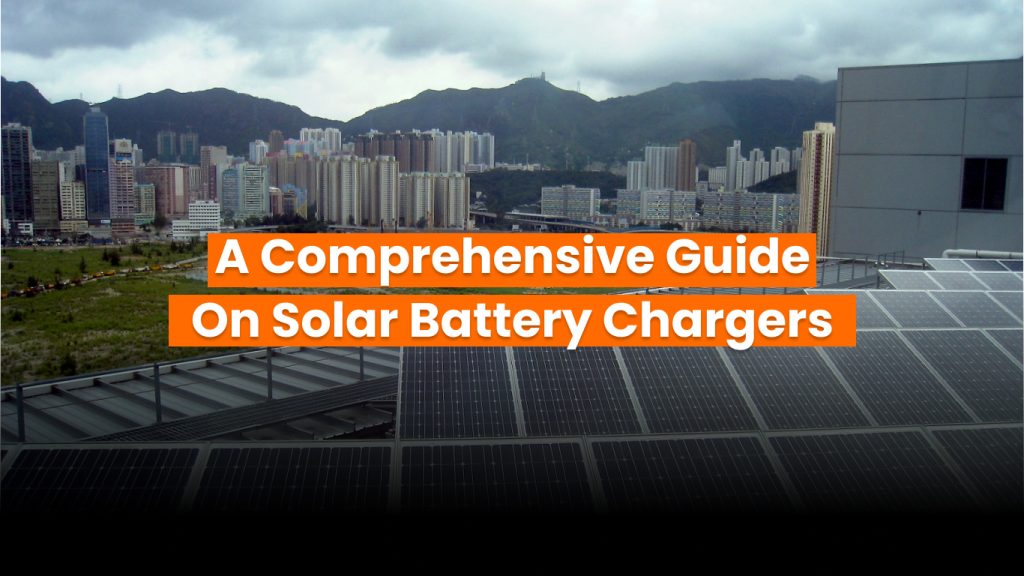In today’s mobile world, what if you could power up your devices anywhere, anytime—just using sunshine? Solar battery chargers make this possible. These handy gadgets harness solar energy and transform it into electricity to top off your phone, car battery, laptop, portable fan—you name it. And because many are lightweight and compact, they’re ideal for travel, outdoor adventures, or emergency use.
Let’s dive into how they work, their advantages and limitations, how to choose one, top models on the market, and whether they’re worth your investment.
How solar charging works
At its core, solar charging involves converting sunlight into electricity through a process called the photovoltaic effect:
- Photon absorption – Sunlight contains photons, which hit silicon in the solar panel and knock electrons loose.
- Electric field formation – Through a method called doping (adding impurities), the silicon creates an internal electric field, pushing free electrons in one direction.
- Electron flow – When you connect a device, electrons flow through the circuit, generating usable electricity.
- Battery buffering – Most solar chargers include an internal rechargeable battery. The panel charges this buffer, which then charges your gadget via USB or DC port.
To use one, plug in your device with a cable, lay the panel in the sun, and it starts charging—no grid power required.
Benefits of solar battery chargers
Here’s why solar chargers are gaining popularity:
- Minimal maintenance – No need to replace batteries or use fuel.
- Cost-effective – After the upfront purchase, solar energy is free.
- Clean power – No emissions; just sunlight.
- Energy independence – Useful during power cuts or in remote areas.
- Ultra-portable – Some models are pocketable.
- Off-grid access – Great for camping, rural living, or disaster scenarios.
Whether you’re hiking a remote trail or stuck in a blackout, solar chargers offer a reliable backup power source.
Limitations you should know
No technology is perfect—solar chargers come with a few caveats:
- Slower charging – They produce less power than wall chargers, so charging takes longer.
- Limited output – They stabilize existing battery levels, but aren’t ideal for fully recharging from empty.
- Weather-dependent – Efficiency drops in cloudy conditions or during winter months.
Bottom line? Use them as complementary power sources, not sole energy providers.
Are solar battery chargers worth buying?
Here’s what to consider:
- Power rating (watts) – Higher wattage means faster charge rates; choose based on your device’s power needs.
- Device compatibility – Check for USB-C, USB-A, or other required ports.
- Portability (weight/size) – Backpackers should favor compact models; car campers might go bigger.
- Build quality – Water-resistant or rugged designs are ideal for outdoor use.
- Cost vs. quality – Higher-end models offer better durability and faster charging—just be sure the price matches the features.
In essence, assess how often and where you’ll need it, and match the charger’s specs to your use case.
Top solar battery chargers to consider
Here are two standout models to get you started:
- Waaree 5000 mAh Waterproof Solar Power Bank
- Durable, water-resistant build
- Dual USB ports for simultaneous charging
- Charges via solar or 5 V DC port
- Durable, water-resistant build
- Panasonic SolarSmart mobile charger
- Features built-in LED lighting (up to 100 hours in low light)
- Compact and lightweight
- USB connectivity—great for phones and small gadgets
- Features built-in LED lighting (up to 100 hours in low light)
Both models offer a blend of portability, resilience, and convenience.
Conclusion
As the planet grapples with growing energy demands, solar battery chargers are becoming smarter, more affordable alternatives. They provide a renewable, reliable way to stay connected—even off-grid.
When the sun shines, these chargers can sip power and store it for later, making them ideal companions for travel, hikes, emergency kits, and places without electricity. Ultimately, they let you tap into the most abundant energy source we have: the sun.
Frequently asked questions
Can you use solar battery chargers to charge car or RV batteries?
Yes—if you calculate your battery’s capacity and select a charger with enough amperage output.
How should you maintain an RV battery in storage?
Estimate your battery’s daily power drain while idle and select a solar panel system that offsets this to prevent deep discharge.
Is it safe to leave solar chargers connected all day?
Typically yes—most commercial units include overcharge protection to prevent battery damage.
Glossary
- Photovoltaic effect: A fundamental process where light (photons) hits a semiconductor (like silicon), frees electrons, and generates electricity.
- Doping: Adding small amounts of materials to silicon to create an electric field.
- Watts: The power output rate; higher wattage = more electricity per time unit.
- Charge controller: A device ensuring batteries charge safely and efficiently, preventing overcharge or depletion.
Solar battery chargers aren’t just gadgets—they’re empowering tools in our increasingly energy-conscious world. Whether you’re off on an adventure or planning for emergencies, they’re an investment in autonomy, sustainability, and peace of mind. Choose wisely, match the specs to your needs, and let the sun do the rest.




